Inside Isis: Behind the scenes of the militant group's propaganda machine
Battle scenes and public beheadings are so scripted and staged fighters and executioners often perform multiple takes
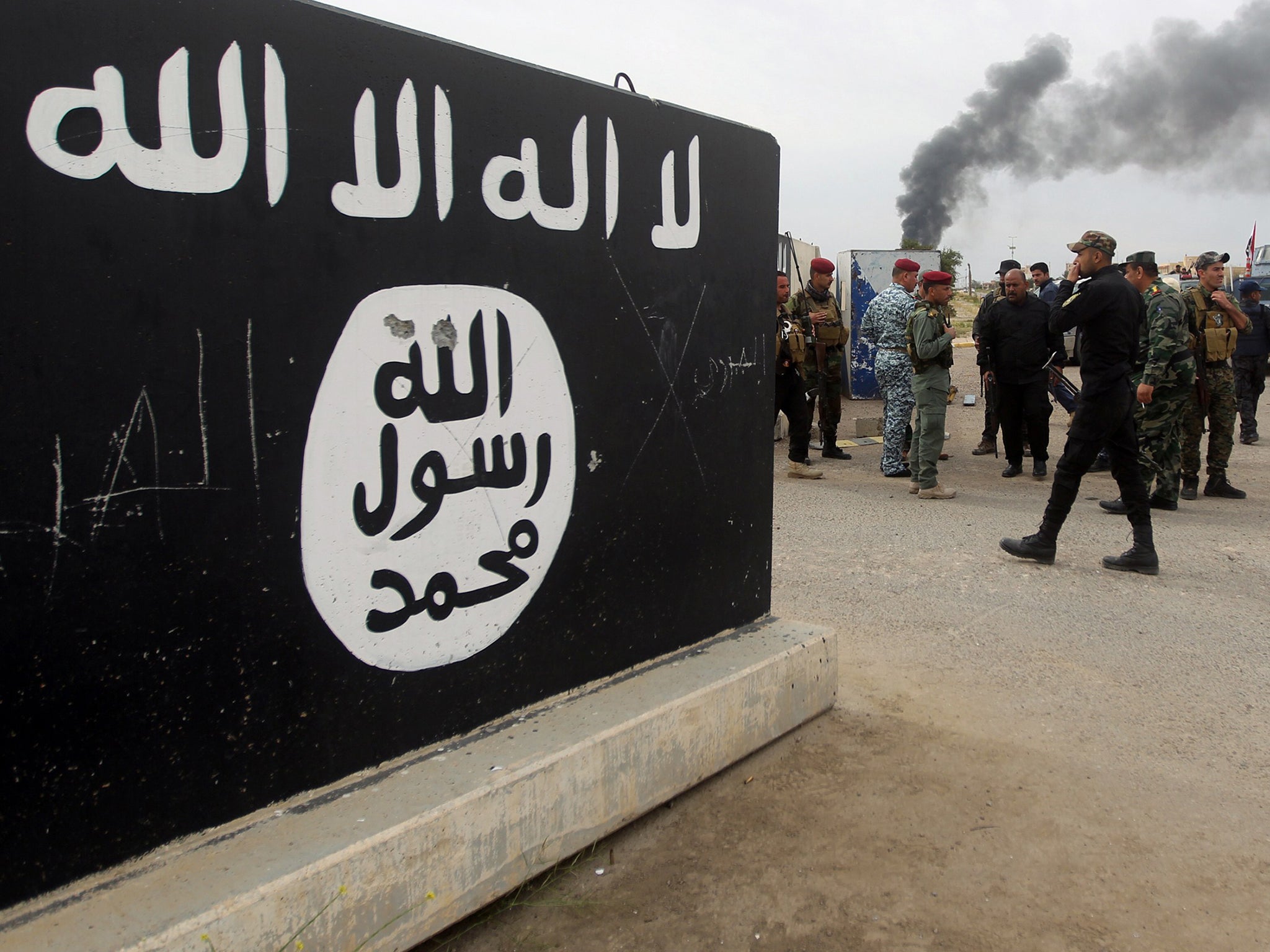
Your support helps us to tell the story
From reproductive rights to climate change to Big Tech, The Independent is on the ground when the story is developing. Whether it's investigating the financials of Elon Musk's pro-Trump PAC or producing our latest documentary, 'The A Word', which shines a light on the American women fighting for reproductive rights, we know how important it is to parse out the facts from the messaging.
At such a critical moment in US history, we need reporters on the ground. Your donation allows us to keep sending journalists to speak to both sides of the story.
The Independent is trusted by Americans across the entire political spectrum. And unlike many other quality news outlets, we choose not to lock Americans out of our reporting and analysis with paywalls. We believe quality journalism should be available to everyone, paid for by those who can afford it.
Your support makes all the difference.The assignments arrive on slips of paper, each bearing the black flag of Isis, the seal of the terrorist group’s media emir, and the site of that day’s shoot.
“The paper just gives you the location,” never the details, said Abu Hajer al-Maghribi, who spent nearly a year as a cameraman for the Isis. Sometimes the job was to film prayers at a mosque, he said, or militants exchanging fire. But, inevitably, a slip would come with the coordinates to an unfolding bloodbath.
For Abu Hajer, that card told him to drive two hours southwest of the Syrian city of Raqqa, the capital of the caliphate, or Islamic realm, declared by the militant group. There, he discovered that he was among 10 cameramen sent to record the final hours of more than 160 Syrian soldiers captured in 2014.
“I held my Canon camera,” he said, as the soldiers were stripped to their underwear, marched into the desert, forced to their knees and massacred with automatic rifles.
His footage quickly found a global audience, released online in an Isis video that spread on social media and appeared in mainstream news coverage on Al Jazeera and other networks.
Abu Hajer, who is now in prison in Morocco, is among more than a dozen Isis defectors or members in several countries who provided detailed accounts to The Washington Post of their involvement in, or exposure to, the most potent propaganda machine ever assembled by a terrorist group.
What they described resembles a medieval reality show. Camera crews fan out across the caliphate every day, their ubiquitous presence distorting the events they purportedly document. Battle scenes and public beheadings are so scripted and staged that fighters and executioners often perform multiple takes and read their lines from cue cards.
Cameras, computers and other video equipment arrive in regular shipments from Turkey. They are delivered to a media division dominated by foreigners — including at least one American, according to those interviewed — whose production skills often stem from previous jobs they held at news channels or technology companies.
Senior media operatives are treated as “emirs” of equal rank to their military counterparts. They are directly involved in decisions on strategy and territory. They preside over hundreds of videographers, producers and editors who form a privileged, professional class with status, salaries and living arrangements that are the envy of ordinary fighters.
“It is a whole army of media personnel,” said Abu Abdullah al-Maghribi, a second defector who served in Isis’s security ranks but had extensive involvement with its propaganda teams.
“The media people are more important than the soldiers,” he said. “Their monthly income is higher. They have better cars. They have the power to encourage those inside to fight and the power to bring more recruits to the Islamic State.”
Increasingly, that power extends beyond the borders of the caliphate. The attacks in Paris were carried out by militants who belonged to a floating population of Isis followers, subjects who are scattered among dozens of countries and whose attachments to the group exist mainly online.
Abdelhamid Abaaoud, the alleged architect of the attacks who was killed in a raid in France, had appeared repeatedly in Isis recruiting materials. The barrage of videos and statements released afterward made clear that the overriding goal of Isis is not merely to inflict terror on an adversary but also to command a global audience.
The United States and its allies have found no meaningful answer to this propaganda avalanche. A State Department program to counter the caliphate’s messaging has cycled through a series of initiatives with minimal effect. Isis supporters online have repeatedly slipped around efforts to block them on Twitter and Facebook.
Overmatched online, the United States has turned to lethal force. Recent U.S. airstrikes have killed several high-level operatives in Isis's media division, including Junaid Hussain, a British computer expert. FBI Director James B. Comey recently described the propaganda units of Isis, also known as ISIL and the Islamic State, as military targets.
“I am optimistic that the actions of our colleagues in the military to reduce the supply of ISIL tweeters will have an impact,” Comey said at an event last month in Washington. “But we’ll have to watch that space and see.”
Research for this article involved interviews with Isis defectors and members, as well as security officials and counterterrorism experts in six countries on three continents. The most authoritative accounts came from seven Isis defectors who were either in prison in Morocco or recently released after facing terrorism charges upon their return from Syria. All spoke on the condition that they be identified only by the adopted names that they used in Syria.
Those interviews were conducted with the permission of the Moroccan government in the administrative wing of a prison complex near the nation’s capital. The prisoners said they spoke voluntarily after being approached by Moroccan authorities on behalf of The Post. Other prisoners declined. Most of the interviews took place in the presence of security officials, an arrangement that probably led participants to play down their roles in Isis but seemed to have little effect on their candor in describing the caliphate’s media division.
The cameraman
Abu Hajer, a soft-spoken Moroccan with a thin beard and lean physique, said he had been active in jihadist media circles for more than a decade before he entered Syria in 2013. He began participating in online Islamist forums after the U.S. invasion of Iraq in 2003, he said, and later became an administrator of an influential site known as Shamukh, giving him authority to admit new members and monitor the material other militants posted.
Those credentials cleared his path to coveted assignments within Isis, a group that began as al-Qaeda’s affiliate in Iraq before splitting off from that terrorist network in an ideological rupture two years ago.
The group has an elaborate system for evaluating and training new arrivals. Abu Hajer said that shortly after entering Syria he was groomed to be part of Isis’s media team. He spent two months undergoing basic military training before he was admitted to a special, month-long program for media operatives.
The program “specializes in how to do filming. How to mix footage. How to get the right voice and tone” in interviews, he said. After completing the course, he was given a Canon camera, a Samsung Galaxy smartphone and an assignment with the caliphate’s media unit in Raqqa.
Abu Hajer, who is in his mid-30s, had come from an impoverished corner of Morocco. Now that he is in prison, his wife and children have returned to the encampment where they lived before departing, a shanty village of corrugated tin and plywood with no running water near a cement plant on the outskirts of Rabat.
In Syria, they were given a villa with a garden. Abu Hajer was issued a car, a Toyota Hilux with four-wheel drive to enable him to reach remote assignments. He was also paid a salary of $700 a month — seven times the sum paid to typical fighters — plus money for food, clothes and equipment. He said he was also excused from the taxes that Isis imposes on most of its subjects.
He quickly settled into a routine that involved getting his work assignments each morning on pieces of paper that also served as travel documents enabling him to pass Isis checkpoints. Most jobs were mundane, such as capturing scenes from markets or celebrations of Muslim holidays.
Abu Hajer said he encountered only one Western hostage, John Cantlie, a British war correspondent who was kidnapped in Syria in 2012. Cantlie was cast by his captors in a series of BBC-style news reports that touted the caliphate’s bustling economies and adherence to Islamic law while mocking Western governments.
Abu Hajer said he filmed Cantlie in Mosul in 2014, and he said that by then the British broadcaster was no longer wearing an orange jumpsuit or confined to a darkened room and was allowed to wander among the markets and streets of Mosul for camera crews.
“I cannot tell you whether he was coerced or threatened. He was walking freely,” Abu Hajer said, an assertion that is at odds with what is known about Cantlie’s captivity.
A video released in January shows Cantlie in multiple locations in Mosul, including one in which he is riding a motorcycle with an armed militant seated behind him. It was among his final appearances before the series was halted with no explanation or subsequent indication of Cantlie’s fate, although articles attributed to him have since appeared in the caliphate’s magazine.
One of Abu Hajer’s next assignments took him to an elaborately staged scene of carnage, a mass execution-style killing choreographed for cameras in a way that has become an Isis signature.
After arriving at the site, he said that he and the other camera operators gathered to “organize ourselves so that we wouldn’t all film [from] the same perspective.”
Abu Hajer said he had grave objections to what happened to the Syrian soldiers in the massacre that he filmed in the desert near Tabqa air base. But he acknowledged that his misgivings had more to do with how the soldiers were treated — and whether that comported with Islamic law — than any concern for their fates.
As the soldiers were stripped and marched into the desert, Abu Hajer said he filmed from the window of his car as an Egyptian assistant drove alongside the parade of condemned men.
“When the group stopped, I got out,” he said. “They were told to kneel down. Some soldiers got shot. Others were beheaded.” The video, still available online, shows multiple camera operators moving in and out of view as Isis operatives fire hundreds of rounds.
“It wasn’t the killing of soldiers that I was against,” Abu Hajer said. “They were Syrian soldiers, Nusairis,” he said, referring to the religious sect to which Syrian President Bashar al-Assad and his closest supporters belong. “I thought they deserved to get shot.”
“What I didn’t like was that they were stripped to their underwear,” he said, an indignity that he considered an affront to Islamic law.
Abu Hajer also said he kept his lens aimed away from the beheadings because of his objections to the practice. But asked whether he considered refusing to record the massacre, he said he feared that would consign him to the fate of those he filmed.
“You don’t want to do it,” he said, “but you know that you cannot say, ‘No.’ ”
The machine
The contradictions of Isis’s propaganda apparatus can make its structure and strategy seem incoherent.
The group exerts extraordinarily tight control over the production of its videos and messages but relies on the chaos of the Internet and social media to disseminate them. Its releases cluster around seemingly incompatible themes: sometimes depicting the caliphate as a peaceful and idyllic domain, other times as a society awash in apocalyptic violence.
The dual messages are designed to influence a divided audience. The beheadings, immolations and other spectacles are employed both to menace Western adversaries and to appeal to disenfranchised Muslim males weighing a leap into the Islamist fray.
A separate collection depicts Isis as a livable destination, a benevolent state committed to public works. Videos show the construction of public markets, smiling religious police on neighborhood patrols and residents leisurely fishing on the banks of the Euphrates.
Even the concept of the caliphate has a dual aspect. The terrorist group’s rise is a result mainly of its demonstrated military power and the tangible territory it has seized. But a remarkable amount of its energy is devoted to creating an alternative, idealized version of itself online and shaping how that virtual empire is perceived.
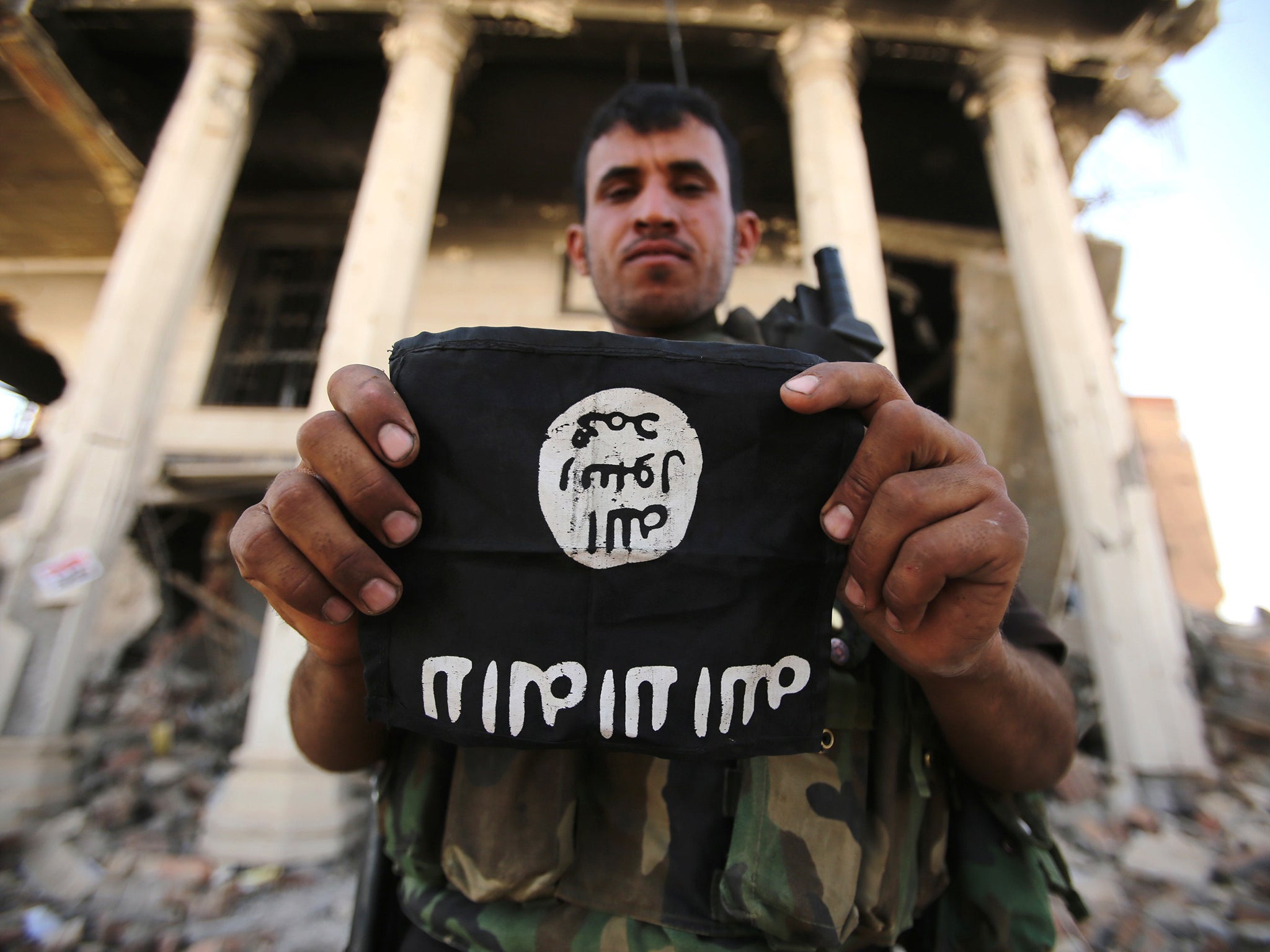
That project has been entrusted to a media division that was operational well before the caliphate was formally declared in 2014. U.S. intelligence officials said they have little insight into who controls Isis’s propaganda strategy, although it is presumed to be led by Abu Muhammad al-Adnani, the caliphate’s main spokesman.
The media wing has relied on veterans of al-Qaeda media teams, young recruits fluent in social media platforms, and a bureaucratic discipline reminiscent of totalitarian regimes. Defectors and current members said that phones and cameras they brought to Syria were impounded upon arrival by Isis to prevent unauthorized and potentially unflattering images from finding their way online.
Only sanctioned crew members were allowed to carry cameras, and even they were to follow strict guidelines on the handling of their material. Once finished with a day’s shooting, the crews were to load their recordings onto laptops, transfer the footage to memory sticks, then deliver those to designated drop sites.
In an Isis enclave near Aleppo, the media division’s headquarters was a two-story home in a residential neighborhood, defectors said. The site was protected by armed guards, and only those with permission from the regional emir were allowed to enter.
Each floor had four rooms packed with cameras, computers and other high-end equipment, said Abu Abdullah, 37, who made occasional visits to the site as a security and logistics operative. Internet access went through a Turkish wireless service.
The house served as an editorial office of Dabiq, Isis’s glossy online magazine. Some also worked for al-Furqan, the terrorist group’s main media wing, which accounts for the majority of its videos and mass-audience statements.
Overall, there were more than 100 media operatives assigned to the unit, Abu Abdullah said. “Some of them were hackers; some were engineers.”
Abu Abdullah had no affiliation with the media arm, but he often did its bidding. At one point he was tapped to install a generator at the media headquarters so that it would not lose power when electricity went down.
Another assignment involved recovering corpses from battle scenes and arranging them to be photographed for propaganda videos exalting their sacrifice. He would wash away dried blood, lift the corners of dead fighters’ mouths into beatific smiles, and raise their index fingers in a gesture adopted by Isis as a symbol of its cause.
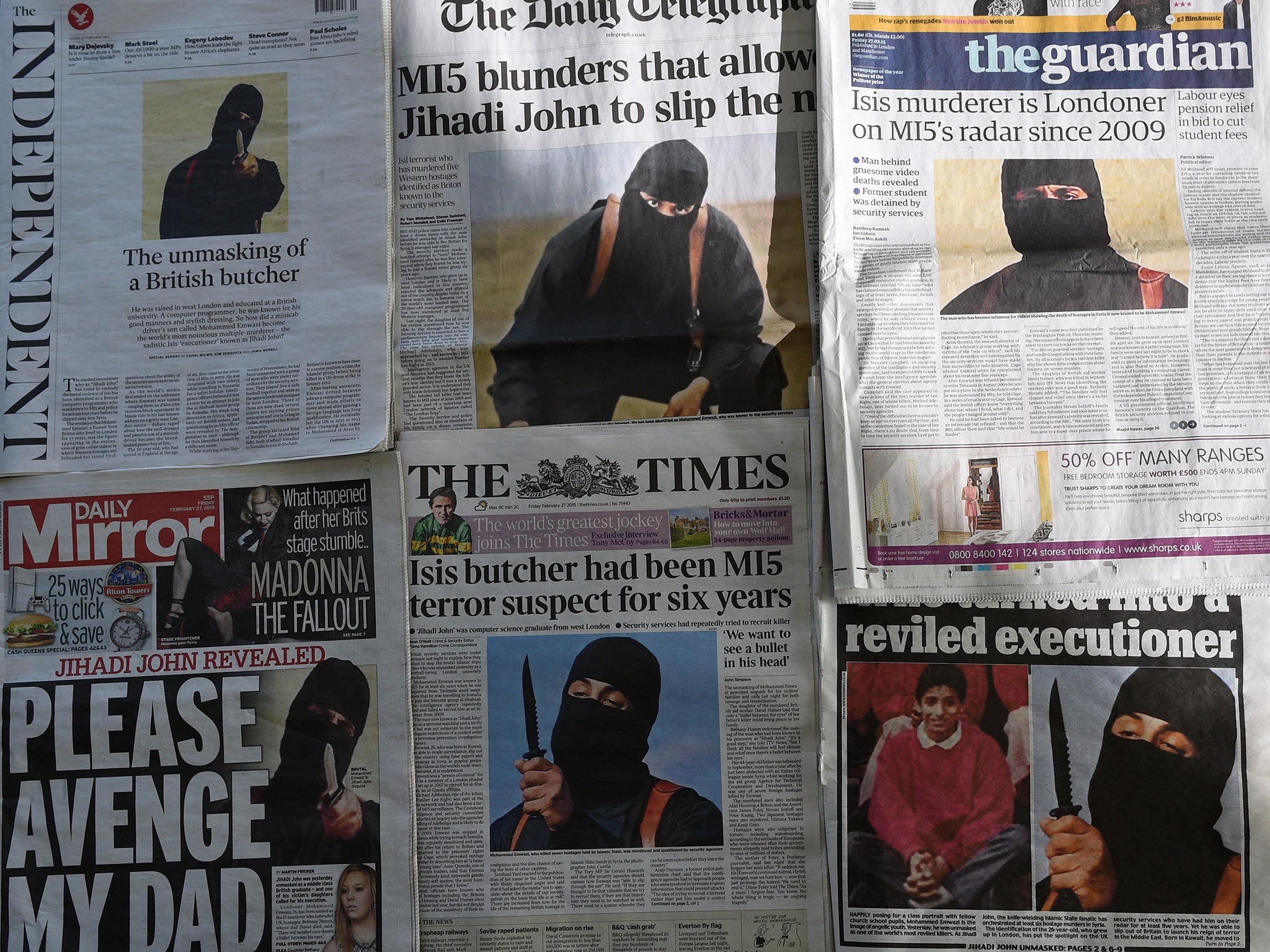
Many in the American public were introduced to Isis through wrenching videos in which Mohammed Emwazi — a masked, knife-wielding militant with a British accent known as “Jihadi John” — slit the throats of Western hostages, including Americans James Foley and Steve Sotloff.
Scrutiny of those and other videos revealed an extraordinary level of choreography. Discrepancies among frames showed that scenes had been rehearsed and shot in multiple takes over many hours.
The releases showed professional-caliber attention to lighting, sound and camera positioning. Certain videos, including one showing a decapitated American Peter Kassig, appear to have employed special effects software to digitally impose images of Kassig and his killer against a dramatic backdrop.
Those production efforts were reserved for videos aimed at mass Western audiences and were addressed explicitly to President Obama. But defectors said that even internal events not intended for a global viewership were similarly staged.
Abu Abdullah said he had witnessed a public execution-style killing in the city of Bab in which a propaganda team presided over almost every detail. They brought a white board scrawled with Arabic script to serve as an off-camera cue card for the public official charged with reciting the condemned man’s alleged crimes. The hooded executioner raised and lowered his sword repeatedly so that crews could catch the blade from multiple angles.
The beheading took place only when the camera crew’s director said it was time to proceed. The execution wasn’t run by the executioner, Abu Abdullah said. “It’s the media guy who says when they are ready.”
The brand
For two decades, the dominant brand in militant Islam was al-Qaeda. But Isis has eclipsed it in the span of two years by turning the older network’s propaganda playbook on its head.
Al-Qaeda’s releases always exalted its leaders, particularly Osama bin Laden. But Isis’s propaganda is generally focused on its fighters and followers. Appearances by leader Abu Bakr al-Baghdadi or his senior lieutenants have been rare.
Rejecting the lecture format employed by al-Qaeda, Isis’s videos are cinematic, emphasizing dramatic scenes, stylized transitions and special effects.
“The group is very image-conscious, much like a corporation,” said a U.S. intelligence official involved in monitoring Isis’s media operations. Its approach to building its brand is so disciplined, the official said, “that it’s very much like saying ‘This is Coca-Cola’ or ‘This is Nike.’ ”
The propaganda competition with al-Qaeda is a high priority, defectors said. One former Isis fighter said that he came under enormous pressure from the organization after it learned that his father had been a high-ranking al-Qaeda operative killed in Pakistan in a CIA drone strike.
Isis media figures pushed the recruit to appear in a video renouncing his father’s organization, said the son, who spoke on the condition that neither he nor his father be identified. His refusal, and reluctance to fight al-Qaeda’s affiliate in Syria, damaged his standing in Isis, and he said he fled in fear for his life.
Al-Qaeda has typically required extraordinary patience from its audience. Even its most media-savvy affiliate, the al-Qaeda branch in Yemen, often takes months to release new issues of its online magazine, Inspire.
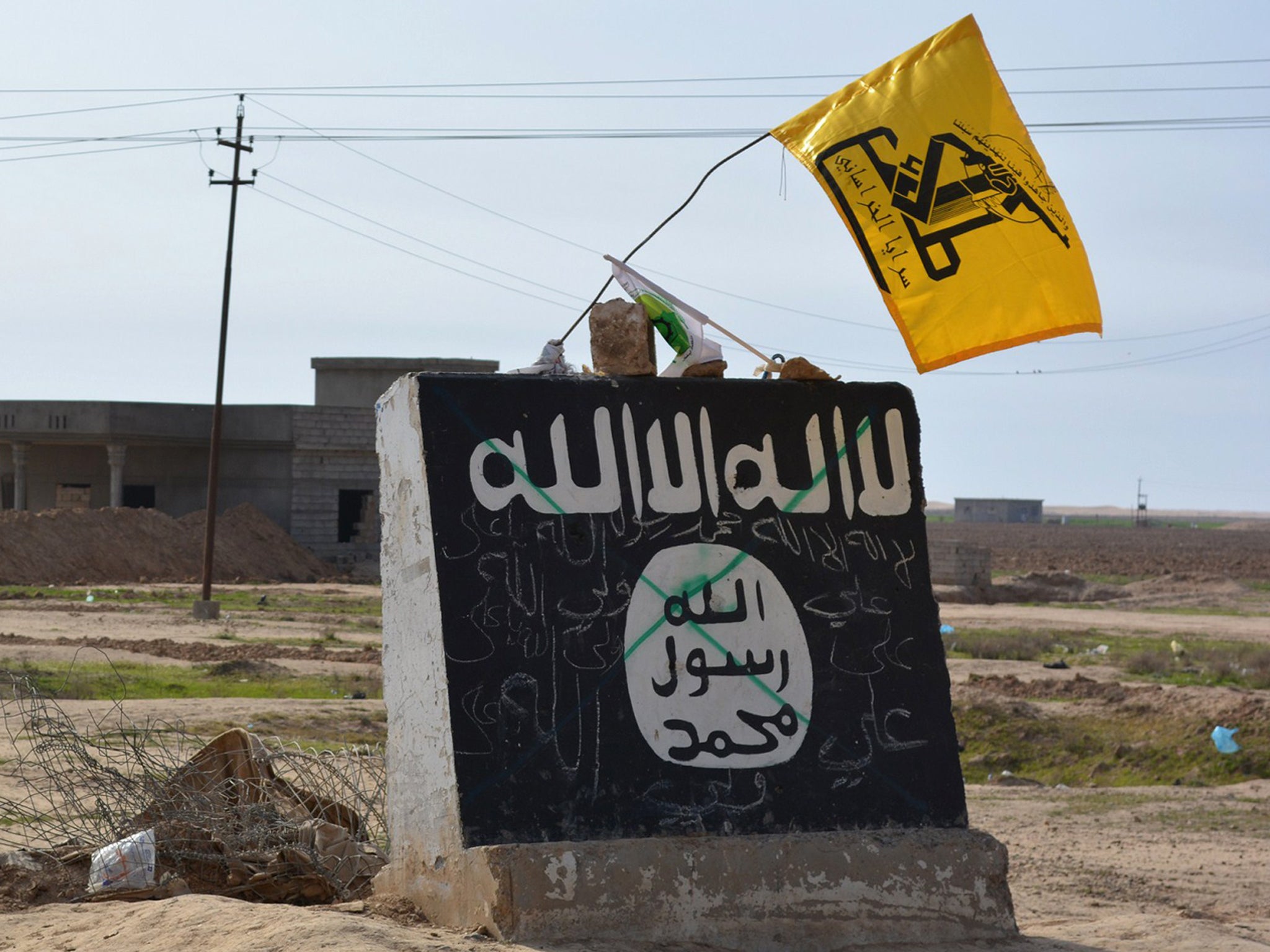
The frequency and volume of releases by Isis are staggering by comparison. The group has produced hundreds of videos in more than a half-dozen languages, puts out daily radio broadcasts and garners as many as 2 million mentions per month on Twitter.
The group also appears to have connections to prominent media organizations in the Middle East.
Twitter and Facebook have moved to shut down accounts associated with Isis and ban the distribution of its messages, but users have found ways to resurface. Thousands of loyalists have also flocked to new services that are less vulnerable to government scrutiny, including Telegram, a messaging application created by a Russian software entrepreneur, although Telegram began shutting down Isis channels after the Paris attacks.
Isis has also exploited apparent connections to news organizations in the Middle East. A video that surfaced in 2013 appeared to show an Al Jazeera correspondent working with a cameraman, Reda Seyam, a militant who had been linked to terrorist plots and is a senior figure in Isis.
In a comprehensive examination of the terrorist group’s media releases in the summer, Charlie Winter, until recently an analyst at the Quilliam Group in the United Kingdom, identified 1,146 distinct pieces of propaganda, including photos, videos and audio releases, during a single month-long stretch.
Winter counted as many as 36 separate media offices that answer to Isis’s headquarters in Raqqa — including affiliates in Libya, Afghanistan and West Africa — and saw evidence of extraordinary coordination across the network.
At one point during his study, on July 19, he noticed that every affiliate had simultaneously shifted to a new logo with the same stylized Arabic script. The icon appeared in the same location on every image and in the initial frame of every video release.
“There was clearly a communique issued,” Winter said in an interview. “The Islamic State is constantly striving to be as formalized, as bureaucratic-seeming as possible, to keep up the appearance of being a state.”
That effort to simulate legitimacy is particularly pervasive inside the caliphate.
The same videos employed to shock outsiders are used internally to cow the group’s less enthusiastic subjects. A constant stream of utopian messages is designed to convince residents, in Soviet-style fashion, of the superiority of Isis.
While Internet access is often restricted to the public, propaganda units set up giant viewing screens in neighborhoods where residents come out in the evenings to watch approved videos streamed from laptops.
“It’s like a movie theater,” said Abu Hourraira al-Maghribi, a 23-year-old with a shaved head who wore an Adidas hoodie when he met with reporters in prison. The videos are drawn from Isis’s expanding film library, he said, depicting “daily life, [military] training and beheadings.”
Isis’s most notorious videos — including those showing the beheadings of Western hostages and the burning of a caged Jordanian fighter pilot — were shown over and over, he said, long after their audiences beyond the caliphate dissipated.
Abu Hourraira said he attended one screening on a street near the University of Mosul that attracted about 160 people, including at least 10 women and 15 children. One of the videos showed an execution by Emwazi, who is believed to have been killed this month in a U.S. drone strike.
“The kids, they are not looking away — they are fascinated by it,” Abu Hourraira said. Jihadi John became a subject of such fascination that some children started to mimic his uniform, he said, wearing all “black and a belt with a little knife.”
The Americans
Isis maintains strict bureaucratic boundaries within its media wing. Camera crews were kept separate from the teams of producers and editors who stitched the raw footage together, adding titles, effects and soundtracks. Real names were almost never exchanged.
But Abu Hajer and two other defectors said that an American in his late 30s with white skin and dark-but-graying hair was a key player in some of Isis’s most ambitious videos.
“The American does the editing,” Abu Hajer said, and was the creative force behind a 55-minute documentary called “Flames of War” that was released in late 2014. The film strives to create a mythology surrounding Isis’s origin and connection to the historic Muslim caliphate.
It culminates with scenes of Syrian soldiers digging their own graves while a masked fighter, speaking English with a North American accent, warns that “the flames of war are only beginning to intensify.”
Another American-sounding figure surfaced more recently, delivering daily news broadcasts that appear to emanate from a radio station that Isis overran last year in Mosul. After the attacks in Paris, his voice was the one that most English-speaking audiences heard describing France as “the capital of prostitution and vice” and warning that governments involved in strikes in Syria “will continue to be at the top of the target list.”
U.S. officials said they have been unable to determine the identity of that speaker or others with North American accents. The militant who appeared in the “Flames of War” film remains the subject of an entry on the FBI’s Web site appealing to the public for help identifying him.
The defectors
Isis’s relentless media campaign has fueled a global migration of militants. More than 30,000 foreign fighters from more than 115 countries have flooded into Syria since the start of that country’s civil war. At least a third arrived within the past year, the vast majority of them to join Isis, according to U.S. intelligence estimates.
Of the defectors interviewed by The Post, all but one said their decisions to leave for Syria could be traced to videos they saw online, or encounters on social media, that ignited a jihadist impulse. The only outlier said that he had been prodded by a friend to come to Syria and was promptly imprisoned for refusing to fight.
Abu Hourraira, who spent months fighting in Iraq, said he began searching online for material about Isis as the group began to dominate headlines about the war in Syria. He decided to abandon his job at a dry-cleaning business in Casablanca only after watching the group’s emotionally charged videos.
“Some were like Van Damme movies,” he said, referring to Jean-Claude Van Damme, the Hollywood action star. “You see these men fighting, and you want to be one of these brave heroes.”
Like many countries in the region, Morocco has struggled to offset that pull. Moroccan security officials said that more than 1,500 men had left the country to fight in Iraq and Syria, plus more than 500 women and children, many of them seeking to join their spouses, sons or fathers.
Several of the attackers in Paris, including the alleged architect, were of Moroccan descent, but were born and grew up in Europe.
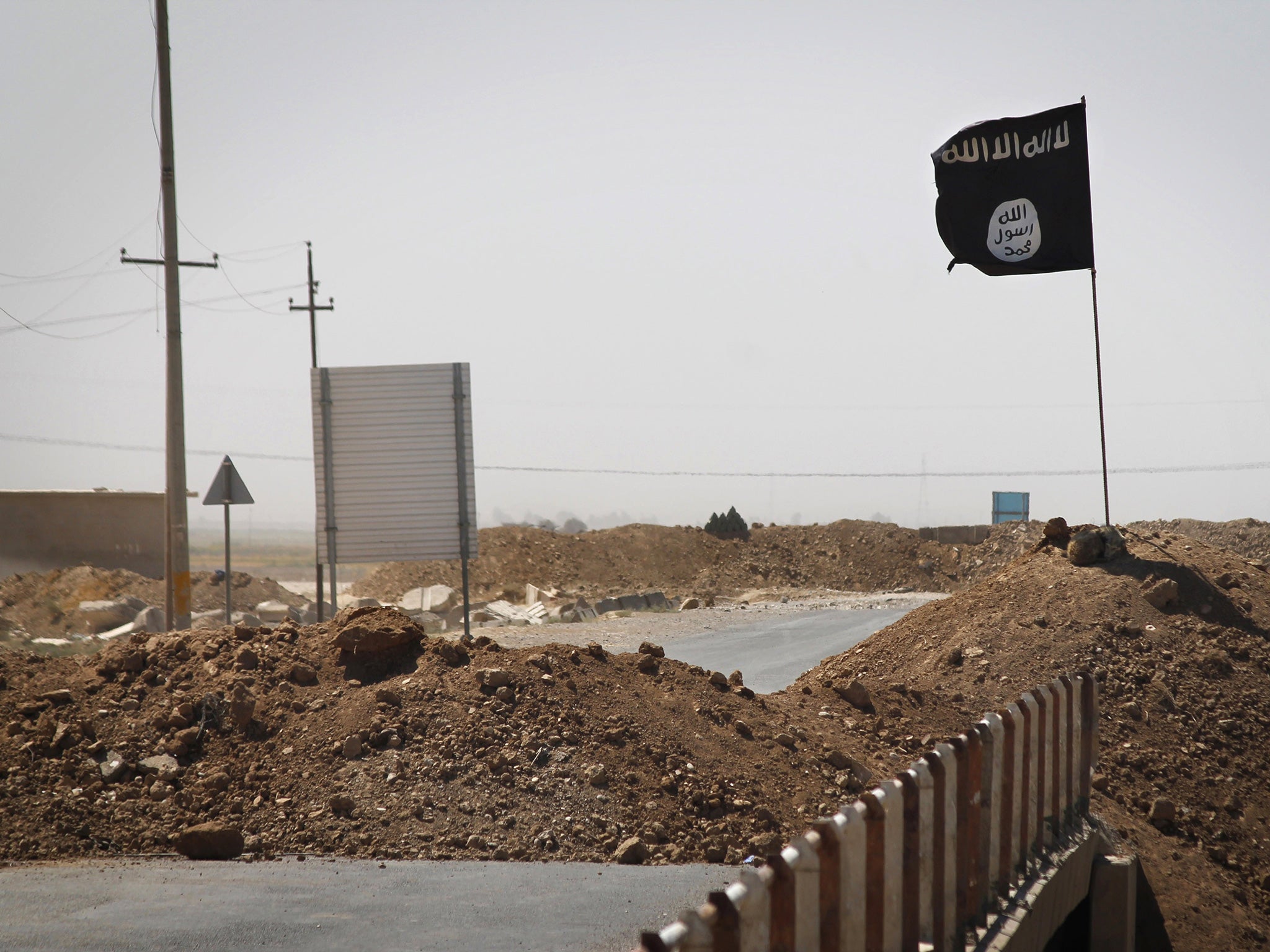
“The fight now is with the propaganda because it plays a very big role in these numbers,” said a senior Moroccan security official who spoke on the condition that neither he nor his agency be identified. Al-Qaeda recruitment relied almost exclusively on direct contact in mosques or other settings, he said, but “now, 90 percent are being recruited online.”
Defectors offered conflicting views on whether Isis would endure. Some said that a cohort of young males in Iraq and Syria are already coming of age immersed in the group’s propaganda and ideology, and that a generation of children was being raised to idealize its masked militants.
But all attributed their decisions to leave Iraq and Syria to a combination of factors, including not only fears for their safety but also a disenchantment that set in when the reality of the caliphate failed to match the version they had encountered online.
Some said they were haunted by scenes of cruelty they saw firsthand but that Isis propaganda teams edited out. Abu Abdullah, who wore a hood to disguise his identity during an interview, said he witnessed a mass killing near Aleppo in which Isis fighters fired into a crowd of Alawites including women and children.
When a 10-year-old boy emerged alive, the highest-ranking militant on hand “pulled out a gun and shot him,” Abu Abdullah said. The slaying was recorded by the ever-present camera crews, he said, but the footage “was never aired.”
Abu Hajer, the former cameraman, said his standing with the group began to slip when he became involved in helping to administer Isis’s religious courts. After sharing views that he said were at odds with his superiors, the perks of his media position were withdrawn.
“They took away my weapons, my monthly income,” as well as his villa and car, he said. A relative told a Post reporter that Abu Hajer finally pulled his family out of Syria after he had received a warning in which an Isis militant dragged a finger across his throat.
A sympathetic colleague gave Abu Hajer the paperwork he needed to pass Isis checkpoints on the way out of Syria, he said. Another friend gave him cash to put his family on a flight out of Turkey. Moroccan authorities were waiting for him at the Casablanca airport.
He now shares a crowded cell with other militants in a high-walled Moroccan prison, with two years remaining on a three-year sentence. Asked whether he worries that his work will induce others to join Isis, he gave an equivocal answer. “To a certain extent I feel responsible,” he said. “But I am not the main reason.”
His videos continue to circulate online.
© Washington Post